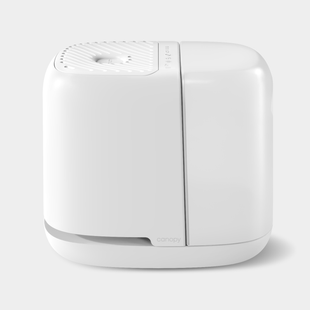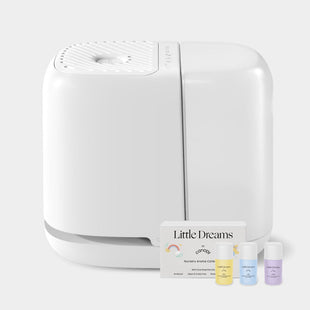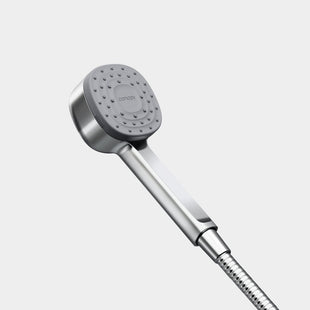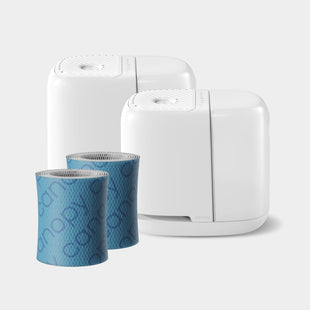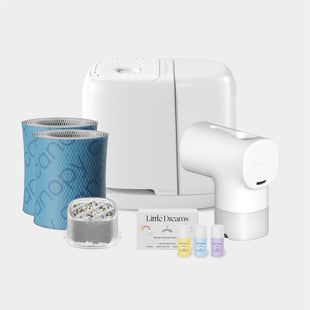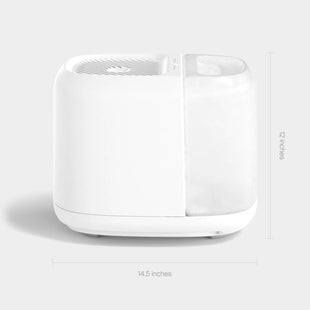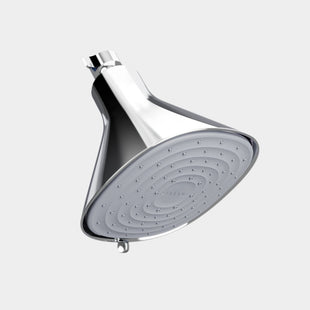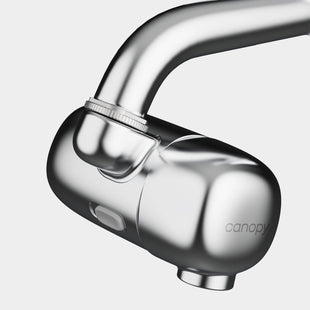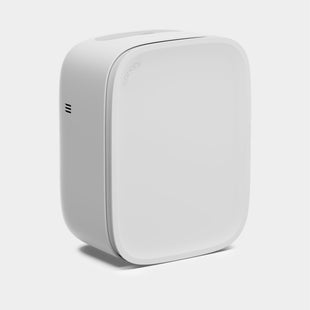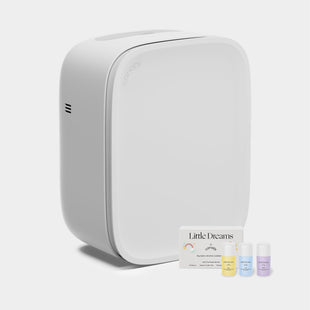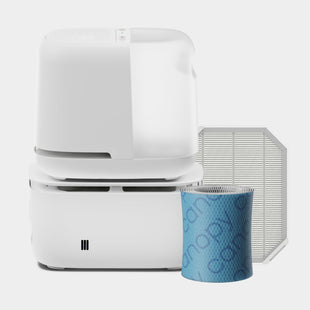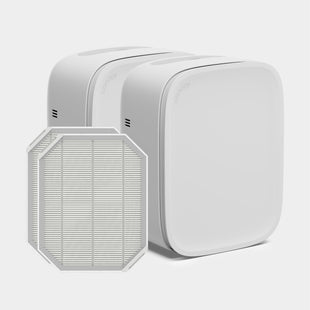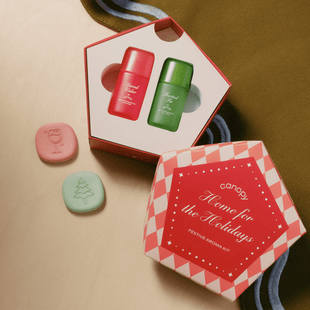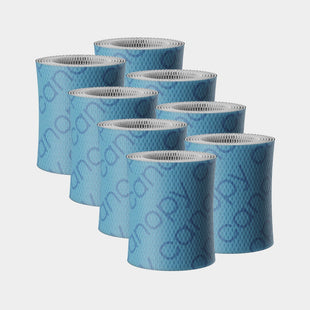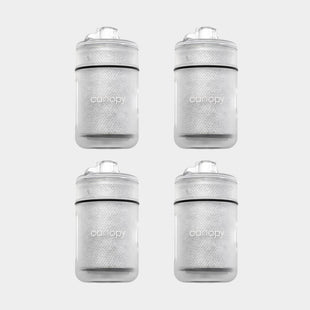This content has been reviewed and updated on May 2, 2023.
For the 50 million Americans who experience seasonal allergies, the changing of the seasons is less a cause for celebration and more an excuse to run to the pharmacy to find anything that can help them feel better. Spring and fall might bring bright colors and mild weather, but when you have allergies, they can also bring watery eyes, a runny nose, an itchy throat, congestion, and other discomforts.
While you stock up on tissues and antihistamines, you might wonder if there’s a way to get rid of allergies. While there’s no permanent cure, understanding what causes allergies, identifying the most common seasonal allergy triggers, and learning to reduce your symptoms can improve your quality of life during peak allergy months.
What Are Seasonal Allergies?
Seasonal allergies, also known as “hay fever,” are allergic reactions triggered by seasonal shifts, specifically the weather, pollen production, and humidity levels. This means your symptoms can change daily as the conditions change.
Allergies are your body’s reaction to typically harmless substances it deems “invaders.” For people with seasonal allergies, airborne contaminants—like pollen—can cause their immune systems to overreact. When your immune system senses the allergen’s presence, it goes into fight mode to protect you and releases histamines and other chemicals. These chemicals cause what we know as allergy symptoms, like watery or itchy eyes, itchy throat, sneezing, runny nose, congestion, and headaches.
What Causes Seasonal Allergies?
Most people experience seasonal allergies when the changing seasons trigger certain types of pollen and molds to increase spore production. While these spores are harmless, if your body develops an immune response to them, your immune system will treat them like an invader and respond accordingly. Below are examples of common seasonal allergens.
Trees
Trees are most likely to cause allergy symptoms in the spring and early summer when the leaves bud and bloom on birch, cedar, alder, maple, willow, poplar, and oak trees. Tree pollen can start being active as early as February and is typically the dominant allergen through March.
Grass and Weeds

Like trees, grass and weeds return in the spring in many regions, bringing plenty of pollen from April to June. Ragweed, which grows virtually everywhere, releases pollen in the late summer and early fall months and peaks in mid-September, causing widespread allergy symptoms that can be severe for some people.
Other common weeds that can trigger allergies in the fall include burning bush, sagebrush, mugwort, lamb’s quarters, tumbleweed, pigweed, and Russian thistle.
Other Seasonal Substances
In addition to the flora, seasonal allergy symptoms can also be triggered by:
- Campfire smoke
- Fireplace and wood stove smoke
- Insect bites
- Swimming pool chlorine
- Pine trees and wreaths during the holiday season
Finding allergy relief doesn’t mean you have to remain indoors and away from trees and grass forever or give up your favorite seasonal activities. With the right approach to seasonal allergy treatment, you can work in your garden or stroll through the pumpkin patch without sniffling and sneezing.
How to Get Rid of Allergies
When it comes to dealing with seasonal allergies, we have good news and bad news.
The bad news is that there is no known cure for allergies, so if you’re looking for how to get rid of allergies permanently, you may be out of luck.
The good news is that there are ways to reduce exposure to potential triggers and improve your day-to-day quality of life during allergy season. If seasonal allergy symptoms have you dreading the spring or fall (or both), try these tips for allergy relief.
Avoid Allergy Triggers
Your instinct to stay indoors with the windows closed during allergy season isn’t entirely wrong. Staying away from your potential triggers is the most obvious way to prevent allergic reaction symptoms, but it’s not always realistic or sustainable. Use a pollen tracker website or your favorite weather app to check daily pollen counts in your area and adjust your plans accordingly.
When the pollen and mold counts are high, try to stay indoors as much as possible and keep your windows closed to avoid exposure.
Take Protective Measures
Because pollen counts can remain high for weeks, staying indoors the entire time isn’t always feasible. Taking preventative measures can help you avoid the inevitable allergic reaction.
These include:
- Wearing sunglasses to protect your eyes
- Wearing a hat to keep pollen away from your face and out of your hair
- Removing your shoes before you come inside to avoid tracking pollen through your home
- Showering and changing clothes after working or playing outdoors
- Delegating outdoor chores to a partner or service when pollen counts are high
- Bathing pets frequently to remove any allergens from their fur
- Using the dryer rather than the outdoor line to dry your laundry, especially your bedding
Take Medication
Over-the-counter and prescription allergy medications won’t get rid of your allergies, but they can make them more tolerable. OTC antihistamines block the symptom-causing histamines from triggering your immune system response and help alleviate some of the most uncomfortable symptoms, but some of these drugs come with side effects, like drowsiness or dizziness.
Before you take any over-the-counter medication for allergy relief, talk to your doctor or pharmacist. If you have a pre-existing or chronic condition or take other medications, an allergy medicine may cause complications or a reaction.
Improve Indoor Air Quality

Preserving your home’s indoor air quality is one of the best ways to prevent allergy misery. This starts with maintaining a clean home: Vacuum carpets and rugs and sweep and mop floors a few times a week, wipe down hard surfaces, and dust weekly. Investing in an air purifier to remove contaminants can also help you breathe easier.
Some people also ask, “Do humidifiers help with allergies?” Maintaining the ideal humidity level—not too dry and not too moist—can help keep allergy symptoms under control. Ideally, indoor humidity should be between 40% and 60%, as measured by a hygrometer. If humidity levels fall below 40%, using a high-quality humidifier can dramatically improve allergy symptoms, but it won’t eliminate your allergies.
Increasing indoor humidity can reduce nasal congestion, inflammation, and irritation, helping you feel more comfortable during allergy season. Adding moisture to the membranes in your nasal passages makes it easier to blow out the irritants and allergens, which can help reduce your symptoms.
It’s very important to keep the indoor humidity from getting too high, though. Excess humidity can cause mold and bacteria to thrive, worsening symptoms. Try getting the humidity to 40% at first and slowly increase the level to find the one that helps you feel your best.
When to Call a Doctor
If you deal with chronic allergy symptoms lasting longer than six weeks or interfering with daily function, make an appointment with your doctor. They may refer you to an allergist or an immunologist who can perform blood or skin tests to identify the specific allergens that trigger your symptoms and help you develop a strategy to avoid them.
In addition to prescription medication, your healthcare professional may advise you to continue with at-home comfort measures. That’s where Canopy comes in. Whether you opt for the original bedside humidifier or the larger Humidifier Plus, you’ll enjoy clean, properly hydrated air throughout your home. Our filtration system traps contaminants in the water before they get into the air, and the run-dry feature eliminates the risk of mold buildup in the humidifier itself. The added hydration makes breathing more comfortable, so you’ll find relief from the sneezing and sniffling.


